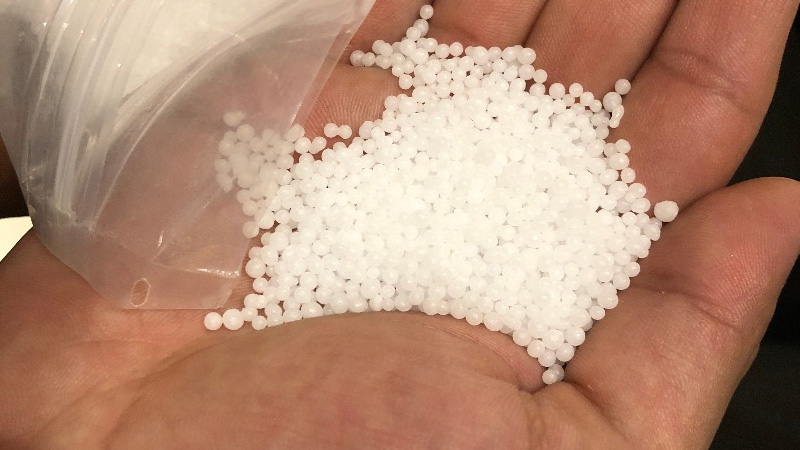We are a customer-oriented company that tries to increase our credit by paying attention to all needs and preferences of our customers. As Urea fertilizer is one of the essential and useful nutrients for plants which is inexpensive, agricultural industry is very eager to apply it.
We try to make your gardens flourishing and increase the products of your garden by supplying the best kind of Urea fertilizer for you.
You can read more about the Urea fertilizer and the benefits of that in this article.
Urea chemical structure
Urea with chemical formula of CH4N2Ohas a white & solid appearance. The melting point of urea is 132 °C and the density of that is 1.33 g/cm³.
Urea fertilizer has no danger in normal conditions and is not considered as dangerous goods.
In case of temperature increase, Urea fertilizer may change to carbon dioxide and ammonia and in case of burning; it makes a little nitrogen oxides which is a toxic gas.
Touching of Urea fertilizer may hurt and harm the human body organs.
Urea dangers to human health
The most significant problems that urea can make for human organs is as follow:
Eye: If Urea reaches the eyes, it makes them red and irritated but do not harm the main part of the eye.
Skin: It may make the skin itchy and irritated.
Inhalation: makes irritation in nose and throat and cause respiratory problems.
Eating: cause the digestive system discomfort and usually makes nausea and vomiting.
We should be careful and pay attention to the amount of Urea fertilizer that we use for plants because applying extra amount of urea may change the growth pattern of the plants and even it may have very negative effects on the plants.
Urea is extremely soluble so if it pours in the sea in large amount, pollution of beach and sea is possible.
Also the dust which is made by moving urea may make air pollution. As a result it is recommended to pay attention how to move Urea and how to store it in order to prevent the air, soil, sea, and environment pollution.
Urea and Nitrogen
More than 90% of urea production in the world is used as the chemical fertilizer containing Nitrogen.
In general usage, urea has the highest amount of Nitrogen among all the solid nitrogenous fertilizers (46.7%). Thereby applying urea is economically efficient.
Urea hydrolyzes to Ammonia and carbon dioxide in the soil. The Ammonia which is the result of this process oxidizes to Nitrate by bacteria of the soil and then it is absorbed by the plants.
Also urea in many cases is used in multi-component formulation of solid fertilizers.
Urea as a fertilizer
As urea is extremely soluble in water, it is appropriate to be used in fertilizer solutions. (For-example in combination with Ammonium Nitrate in form of: UAN).
Granular urea fertilizer can be distributed easier because of the small size of its particles so it is better than the pilled Urea and it is an advantage for the mechanical program.
The most common impurity of Urea is Biuret which makes the plants weak.
One main problem about Urea fertilizer is that because it is extremely soluble in water, it may be washed by water easily, for example if the plants receive more water than their need by rain, the urea fertilizer may be washed and removed from the soil.
Especially when the soil is sandy, extra amount of water can wash the Urea fertilizer easier.
Thereby the receiving amount of water for the plants which has received Urea fertilizer should be checked and controlled.
Another type of urea fertilizer which is famous and well-known is sulfur-coated urea. As Urea is very soluble, the sulfur makes a cover on Urea particles.
This kind of fertilizer is less soluble and the Nitrogen of it becomes free slowly. So if the sulfur-coated urea is exposed to high amount of water, the Nitrogen cannot be washed easily.
Sulfur-coated urea is more expensive in comparison to Urea fertilizer so it is mostly recommended to be used for decorative flowers and plants.
Also it is suitable for all kinds of plants that are exposed to high amount of rain and water.
Nitrogen is the most important nutritive element in nourishing of fruit trees which helps the trees to grow.
Nitrogen is helpful in growth, flowering, fruit forming, fruit ripening, and Physiology issues after harvesting of most of gardening products.
Nitrogen plays an important role in making protein compounds, amino acids and carbohydrates.
Also the amount of Nitrogen affects the color of fruits. Since the young parts of fruit trees which are growing up, needs Nitrogen a lot, Nitrogen in the plant is very moving and moves to the parts of plant that are younger.
Nitrogen is very effective in flowering and helps to improve this process so it can help fruit formation.
Nitrogen is also very helpful in fruit ripening so if it is added more than the desirable amount to the plant; it causes excessive fruit ripening and reduces the lifetime of fruits in the storage.
To increase the size of fruits, we can add Nitrogen to manure. Nitrogen has indirect effect on fruit volume too.
We should consider that extra amount of Nitrogen causes disorder in fruit color (especially apple trees).
Overuse of Nitrogen also increases the weed growth in fruit gardens and increase plant pests and diseases.
To Conclude about urea as a fertilizer
In summary some of the effects of Nitrogen on plants are as follow: production and expansion of starchy parts of the plant, growth of green parts of the plants like leaves, increasing the foliage amount of the plant, and making the fruit of the plant bigger in size.
Many experts all around the world reports that spraying Nitrogen solutions on fruit trees, especially citrus fruits, is very beneficial.
Some researches believe that spraying Urea in summer is more effective than applying Nitrogen to soil. It increases the fruit making process and even
